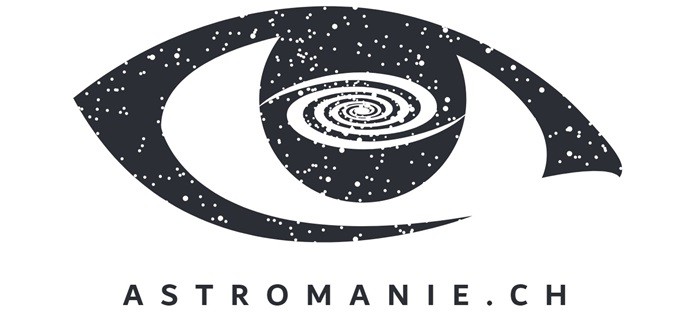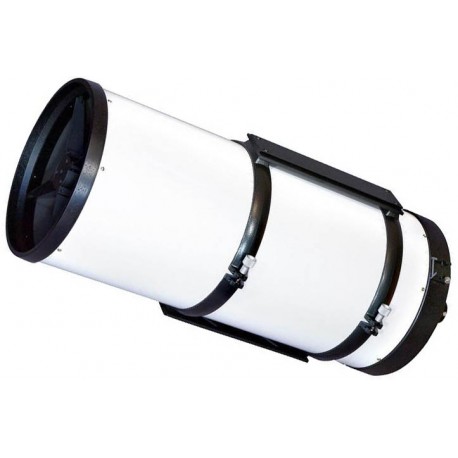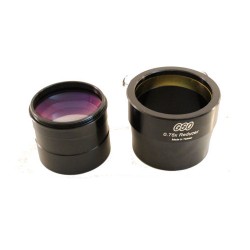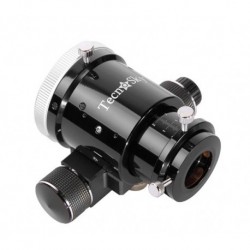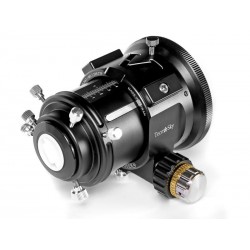Aucun produit
Les prix sont TTC
Télescopes Ritchey-Chrétien GSO 12" Modèle d'exposition Pas de garantie sur cet article
GSORC12 metal / crayford
Utilisé
RC 12, métal, crayford, blanc
Article ayant servi comme démo.
Des traces d'utilisation sont présentes sur la partie métallique.
Etat des miroirs impeccable
Garantie une année
1 Article
Disponible
En savoir plus
Le nouveau Ritchey Chrétien GSO 12 "se présente comme un point de départ pour les amateurs avertis qui cherchent un outil optimisé pour la photographie du ciel profond mais à un prix plus abordable.
Caractéristiques principales :
Schémas optique : Ritchey-Chrétien avec le miroir primaire et secondaire hyperbolique
Miroir primaire et secondaire : Quartz, aluminage à très haute réflectivité 99% avec traitement de protection. Qualité optique égale à 1/12 λ à la surface ou au-dessus.
Tube : Aluminium
Diagrammes intérieur : optimisés à l’ordinateur pour éliminer toutes réflexions de lumière sur les bords intérieur du tube
Collimation : elle s'effectue sur le support secondaire et sur la cellule du primaire.
Focuser: nouvellement développé, monorail, 4",avec démultiplication micrométrique 1:10, amélioré pour assurer qu'aucun flexion soit possible pour des charges allant jusqu'à 4 kg
Poids : 22 kg
Double support en queue d'aronde type Losmandy, une dans la partie inférieure du tube pour le monter à la monture et un en haut pour connecter d'autres accessoires.
3 ventilateurs pour une mise en température plus rapide et l'évitement de condensation à l'intérieur du tube
La conception optique RC est recommandé pour l'astrophotographie grâce à un grand champ corrigé et le très grand afflue de lumière (grand secondaire).
Le miroir fixe permet de longues expositions sans les mouvements typiques des optiques SC qui gâche souvent la photographie.
En outre, l'absence de la lame de correction appelé communément lame de Schmid évite la formation gênante de condensat.
Ritchey Crétien telescope for high-level astrophotography with 3" Monorail focuser
Ritchey Crétien (RC) telescopes are known for their excellent optical performance, especially for photographical applications. At the same time however RCs were always notorious for being very expensive. To change this well known US based distributor "Astro-Tech! asked GSO to produce true RC telescopes. GSO is best known for their excellent Newtonian optics which they have built for many years now.
The result of this joint venture is an instrument that is superior in most aspects to a conventional Schmidt Cassegrain, and still comes at a very affordable price.
The GSO 12" RC f/8 Astrograph can illuminate a field diameter of max. ca. 60 mm (including optional RC corrector). Without corrector, the useable field has ca. 35 mm diameter. Here, you have a pure mirror system, that can be used without UV/IR cut filter. Most of the CCD cameras are sensitive in this spectral range.
The image is absolutely free from chromatic abberations and the resolution is higher than most apochromatic refractors in this price range.
The RC12´s three-inch mono rail focuser:
The 3" mono rail focuser is a further development of the crayford design. The load is not carried by four (often underdimensioned) ball bearings but on a stainless steel track on the base, thus preventing tilting and bending even under high loads. It is countered by a big knurled screw that centers the inner tube exactly to the rail. The load is distributed evely acros the rail´s surface.
Optical Advantages of the GSO RC Astrographs
Optical Design: True Ritchey Crétien / RC
The GSO Astrograph is a real Ritchey Crétien reflector telescope. Contrary to Maksutovs or Schmidt Cassegrains which have sperical mirrors and need image correctors, and contrary to Newtonians that need coma correctors, the RC system is a well corrected photographical instrument hat uses only mirrors (no false colour!) and does not require any corrector with many cameras.
The RC has a concave hyperbolical primary mirror and a convex hyperbolical secondary mirror.
The resulting image correction throughout the field as well as the sharpness on the optical axis are superior to typical Schmidt-Cassegrains or Newtonians.
It is for this reason that the Ritchey Crétien is very popular for astro imaging. The RC optical system (and a variant of the RC) is the most frequently used design for professional telescopes such as the 10 meter Keck telescope on Hawaii, or the VLT in Chile. Finally the RC is also available for amateurs without a "Nasa budget".
99% Dielectric High Reflectivity Coating
The primary mirror of the 12" RC is made of quarz which, similar to Zerodur, has practically zero thermic expansion for excellent optical properties during cool-down. Both primary and secondary feature a 99% high reflectivity coating which is well protected against scratches and against aging. Compared with similar instruments you get a much higher effective light gathering power.
Each optical set is tested by the manufacturer
For a constant quality level each optical set is tested and hand corrected after the automatic production with state-of-the-art machinery. Then the optical set is tested with a Zygo interferometer.
Mechanical Advantages of the GSO RC Astrographs
Fixed primary mirror cell and computer optimized baffle system
Most similar telescopes have a movable primary mirror cell. When focusing the telescope the entire mirror is moved. Unfortunately this technique envariably leads to a certain amount of image shift. Most manufacturers have controlled this problem to a fair extent, but the remaining image shift can be quite distracting for astro imaging, particularly with cameras with a small sensor size or when taking series of frames with severyl hours of total exposure time.
In the GSO RC the mirror sits in a fixed mirror cell and focus is changed with a seperate focuser. This eliminates the problem of image shift completely.
Computer optimized baffles are placed inside the tube in order to eliminate stray light.
Collimation of the secondary mirror
The primary mirror is fixed in its precisely machined mirror cell. Collimation of the telescope is done through the secondary mirror. Collimation is rather easy and can even be done by an inexperienced amateur astronomer - we do however recommend to take your time with the collimation!
Delivery contains:
- 12" f/8 RC Astrograph
- 3" Crayford Focuser with 2" and 1 1/4" Adapter
- 2 Tuberings
- Losmandy style Dovetail Plate
Specifications:

